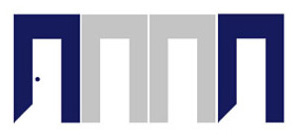This page is a work in progress
For a long time, most of the children’s literature present in American libraries have been dominated by white writers, using white characters, and sometimes supported by rampant stereotypes. Fortunately, collections have been slowly changing as new minority authors are being published.
For the purpose of this course, I’ll refer as multicultural literature the one that highlights experiences of social, economical, and cultural groups that have been historically underrepresented in libraries collections.
Social class and power are usually easily identified. However, cultural groups is a broad selection that combine a variety of aspects, some of which are intertwined. Those aspects include race, religion, ethnicity, customs, gender, identity, sexual orientation, physical appearance, disabilities, and special children.
A well-designed collection must address its weakly represented groups trying to give space to all individuals. This is one of our responsibilities as librarians. The idea is that the more interaction children have with groups different from their own, with adequately curated reading materials, the better chances that they will become empathetic individuals who will understand the differences and the coincidences between people. Those readings will greatly improve the chances for communication and dialog in our communities, as well as enrich and enhance the lives of everyone.
In short, a multicultural collection must reflect all individuals. Following the well-known similes used by Ms. Sims, some books ideally will be mirrors for some readers, while other authors will provide alternative views resembling windows to other lives.
The necessity of having a multicultural approach on our collections relies, in my opinion, in the fact that we are helping children understand that reality is not exclusively what they see around them. There are many realities, all of them important and valid, that deserve representation. This is fundamental if we want to foster empathy. Additionally, we are giving children the opportunity to discover other possibilities and dimensions within their own reality, as well as opening a universe of ideas. Access to multicultural literature is a way to increase self-awareness and develop a critical literacy.
A multicultural collection is a gift to the mind and to the soul of our children and future generations.
Resources
A list of resources for a multicultural literature requires extensive research. Along the duration of the course LIS5566 -Multicultural Literature for Children- I have accumulated a list of suggested materials to be included in libraries. I do not pretend this to be a complete list. We all know that this is a continuously evolving matter.
The list of titles presented here intends to cover socially and culturally conscious books. They were selected because of their authenticity as well as their validation of children’s experiences.
Groups
- Latino/Caribbean-American Literature for Youth
- African American Literature for Youth
- Asian/Pacific American and/or Middle Eastern
- Native / First Nations / American Indian
- Other Diverse Groups: LGBTQ+, disability, ostracism, religion
Rockets, R. (2015, January 30). Mirrors, windows and sliding doors. Retrieved from https://www.youtube.com/watch?v=_AAu58SNSyc
